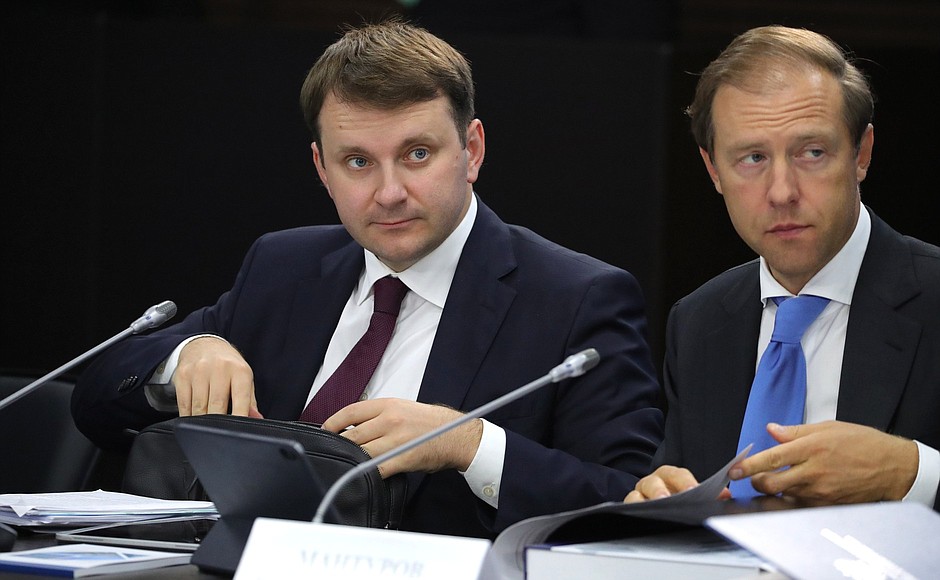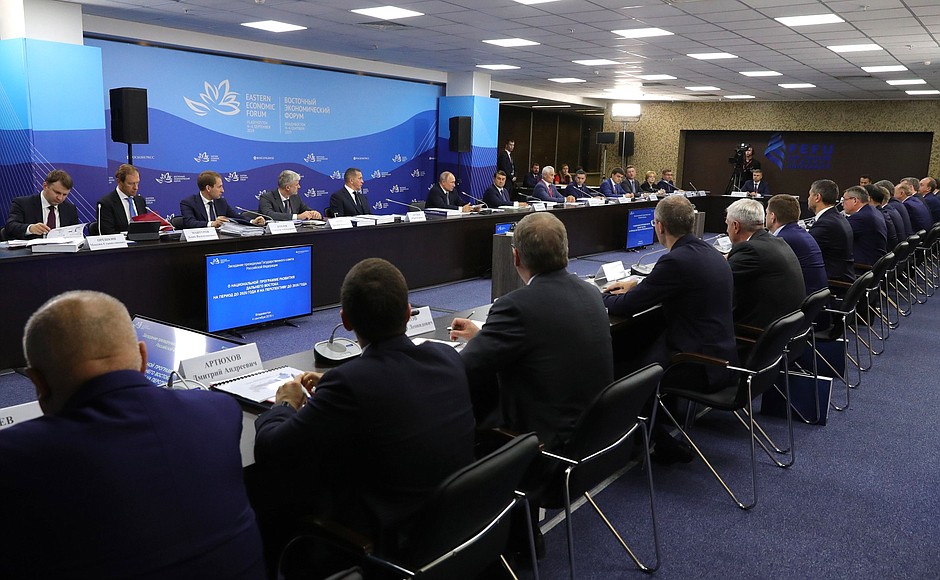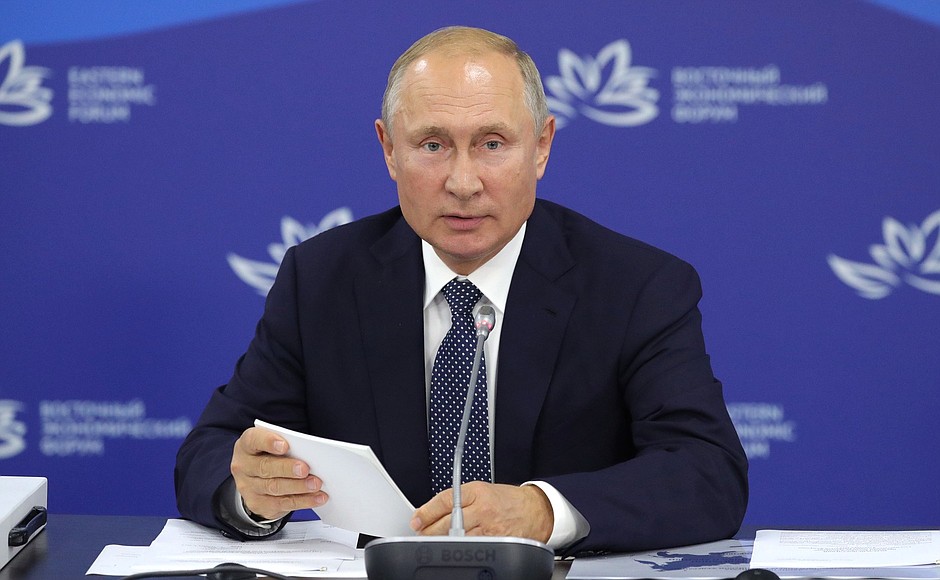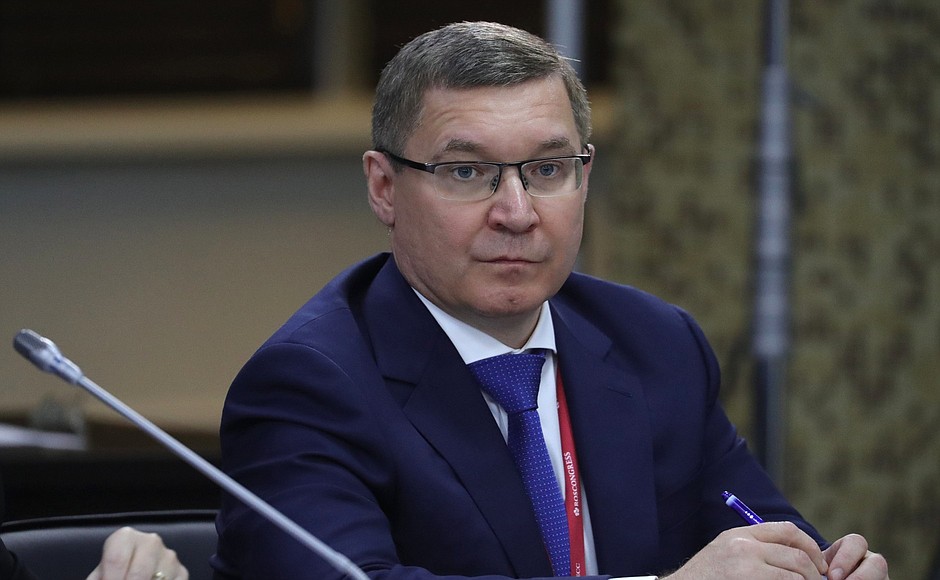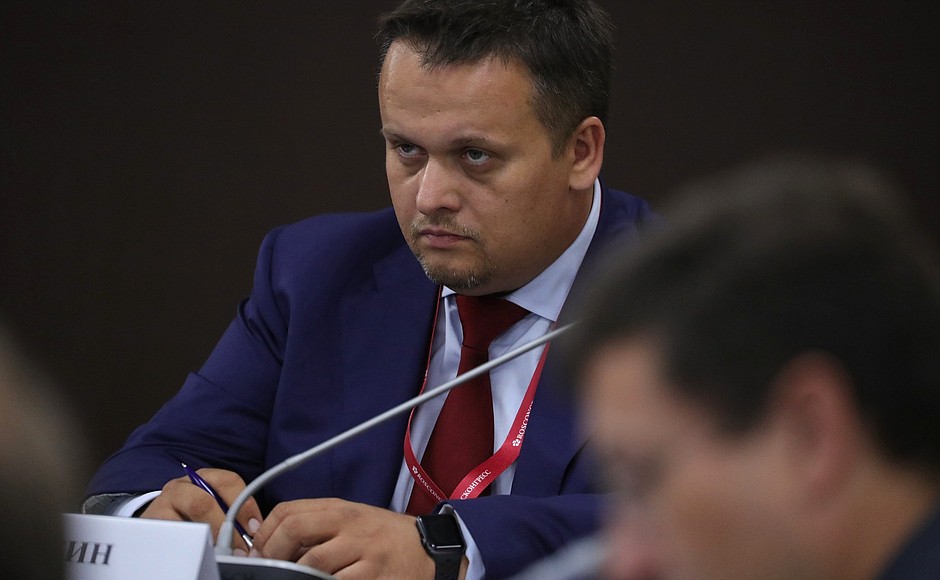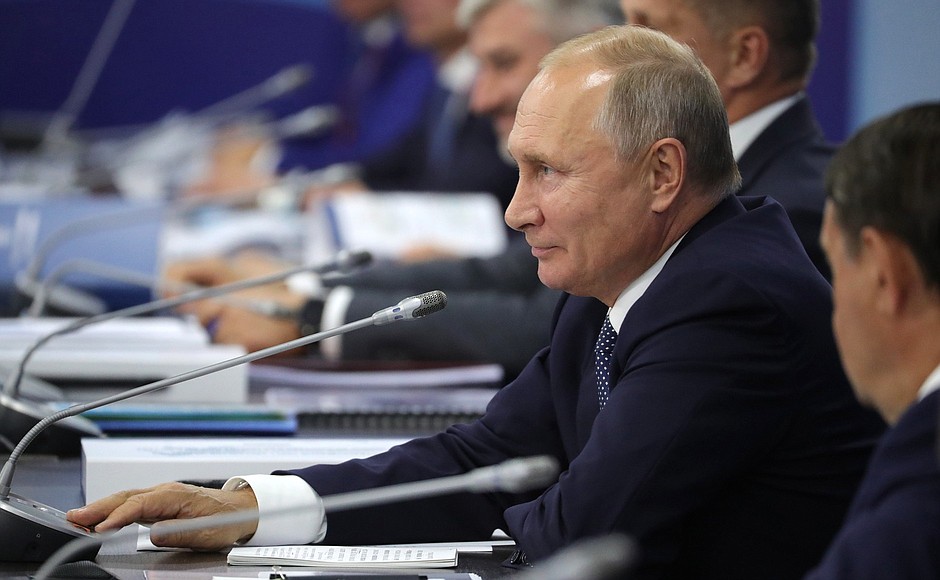President of Russia Vladimir Putin: Colleagues,
By tradition, we are holding a meeting of the State Council Presidium at the venue of the Far Eastern Economic Forum. This approach has justified itself because the subjects discussed by us here and at the forum have a lot in common and are interdependent.
A straightforward conversation involving regional leaders makes it possible to focus on the problems facing us and to single out the most pressing, substantial and topical matters for the Far East and its residents. This allows us to more clearly understand how local tasks are being accomplished, the efficiency of this process and its results. It also helps to expose delays and departmental red tape, including that linked with previously issued instructions. We will also discuss this today.
Last year, the Presidium met during the formulation and launching of national projects. Specific high-priority guidelines were charted for people living in the Far East. Now, let us have a look to what extent they are heeded during practical work, which should lead to the well-being and new living standards for people living in the Far East.
See also
I would like to recall that, initially, we moved to strengthen the economic and infrastructure foundation of the Far East and to enhance its investment appeal. We did this precisely in the interests of the people who need new jobs.
Consequently, the region posted some initial positive trends. Innovative managerial approaches are being introduced, and the region receives additional direct investment, including foreign investment. I am happy to say that the regional industrial production increment has exceeded the average Russian levels almost three-fold in the past five years.
I repeat, there are many specific achievements, and they really exist. However, acting in line with a longtime tradition, we should discuss what is yet to be done, various setbacks and those tasks that are not being duly accomplished rather than what has been done.
Today the same kind of consistent and pivotal steps as the ones made in industry are needed for social development.
Let me point out that the most important indicator for any development programme is what the people can see, and we have yet to achieve this. The population and the demographic situation are among the main indicators, and I have to say that today this indicator is ‘in the red’. The population continues to decrease almost everywhere in the Far East. Unfortunately, there are more people leaving the Far East than coming here. To tell the truth, the flow is increasing; it is obvious, these are the statistics. The inflow is increasing, but it does not cover the number of people leaving the region.
Of course, we have to focus more on issues related to healthcare, education and living conditions; these must be our permanent centre of attention. The authorities’ efforts at every level must be organised in such way that people’s interests and needs are the most important thing, especially as we proceed with large investment projects in the future. We need to start planning today who will work at the new manufacturing facilities, what conditions they will live in, what school their children will go to, how healthcare and other services will be organised and how inviting the cities and villages will be.
Businesspeople must also be responsible for this; they must understand that their companies’ success will depend on making the Far East attractive to people, to qualified specialists and young people.
Today the Prime Minister of India and I visited the Zvezda Shipyard. They try to attract skilled specialists from the European part, because manufacturing is very technical and will become more so, but this requires the conditions mentioned above or people just will not go there. The same goes for almost all the areas and companies we plan to establish here.
The Far East should become a magnet for thousands of people from other regions of the country. We are all well aware of these tasks, but they must be resolved much faster than we have done so far.
I repeat, the same dynamics and upward momentum gained today in the economy of the Far East should also be seen in the social development of the region. We should not slow down, we should not act sluggishly or take it as it comes. Saving on something today, on little things, even if it may seem necessary, may tomorrow result in losses not only of momentum but also of the quality of the region's development as a whole.
Our common work must meet the key goal – the accelerated development of this macro-region that is strategically important for the country. And we must keep this in mind both in our everyday affairs and when planning the future.
A year ago, we agreed that a draft national programme for the development of the Russian Far East until 2025 and further until 2035 would be developed for the current Presidium meeting. The project as a whole has been developed. I would add that the programme was developed from the ground up. Over 230,000 citizens took part in open discussions, including via modern interactive platforms. Discussions took place both in regional legislative assemblies and in municipalities.
The document specifies the goals and activities for the development of each of the 11 regions of the Russian Far East. Of course, the final version of the programme will require careful polishing and a detailed analysis of all aspects and proposed measures, especially concerning the sources and amount of financing, as well as approaches to management decisions. No one needs declarations or good wishes, we all understand this very well. All plans must be realistic and feasible, which means they must be backed up by adequate resources, including budgetary funds.
Let us now begin the discussion, and then we will agree on what we will do following our meeting today.
<…>
